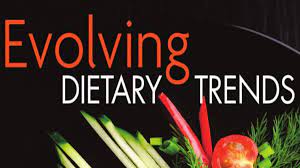Pandemic Dietary Trends: Young Adults, Women, and Low-Income Individuals Hit Hardest
Socioeconomic and gender disparities in dietary trends among young adults during the COVID-19 lockdown are a serious public health concern.
- Dietary Trends among Young Adults during the COVID-19 Lockdown
- Negative dietary changes, Impact on health, Socioeconomic, Gender Disparities
Dietary Trends, Young Adults, COVID-19, Gender
Pandemic Dietary Trends: Young Adults, Women, and Low-Income Individuals Hit Hardest
Dietary Trends among Young Adults during the COVID-19 Lockdown: Socioeconomic and Gender Disparities
The COVID-19 pandemic has had a significant impact on all aspects of our lives, including our eating habits. Young adults were particularly vulnerable to negative dietary changes during the lockdown, due to factors such as stress, social isolation, and economic insecurity.
Socioeconomic disparities
Young adults from low-income households were more likely to experience negative dietary changes during the COVID-19 lockdown than those from high-income households. This is likely due to a number of factors, including:
- Limited access to healthy food: People from low-income households may live in areas with fewer grocery stores and less access to fresh produce. They may also lack the transportation needed to get to grocery stores.
- Affordability: Healthy food can be more expensive than unhealthy food. People from low-income households may have to make trade-offs between buying healthy food and paying for other essential expenses, such as housing and healthcare.
- Stress: Young adults from low-income households may be more likely to experience stress due to financial insecurity, job loss, and other challenges. Stress can lead to unhealthy eating habits.
A study published in the journal Appetite found that young adults from low-income households were more likely to report eating more unhealthy foods and less healthy foods during the COVID-19 lockdown. They were also more likely to report skipping meals and snacking more often.
Gender disparities
Young women were more likely to experience negative dietary changes during the COVID-19 lockdown than young men. This is likely due to a number of factors, including:
- Body image concerns: Young women are more likely to experience body image concerns than young men. These concerns can lead to restrictive eating habits and unhealthy weight loss attempts.
- Social pressure: Young women may feel more pressure to conform to unrealistic beauty standards. This can lead to unhealthy eating habits and disordered eating.
- Stress: Young women may be more likely to experience stress due to gender discrimination, sexual harassment, and other challenges. Stress can lead to unhealthy eating habits.
A study published in the journal PLOS One found that young women were more likely to report eating more unhealthy foods and less healthy foods during the COVID-19 lockdown. They were also more likely to report skipping meals and snacking more often.
Examples of negative dietary changes
Some examples of negative dietary changes that young adults may have experienced during the COVID-19 lockdown include:
- Increased consumption of unhealthy foods, such as processed foods, sugary drinks, and fast food
- Decreased consumption of healthy foods, such as fruits, vegetables, and whole grains
- Skipped meals or irregular mealtimes
- Unhealthy snacking habits
- Emotional eating
Impact on health
Unhealthy dietary changes can have a negative impact on health, both in the short-term and long-term. Some of the potential health consequences include:
- Weight gain
- Obesity
- Type 2 diabetes
- Heart disease
- Stroke
- Cancer
- Mental health problems
A study published in the journal Nature Reviews Endocrinology found that young adults who had unhealthy dietary habits during the COVID-19 lockdown were more likely to experience weight gain and other metabolic problems.
What can be done?
Address socioeconomic and gender disparities in dietary trends among young adults:
- Increase access to healthy food: Governments and community organizations can work to increase access to healthy food in low-income areas. This can be done by supporting grocery stores and farmers markets, and by providing subsidies for healthy food.
- Make healthy food more affordable: Governments and food retailers can work to make healthy food more affordable. This can be done by reducing taxes on healthy food and by offering discounts to low-income households.
- Promote healthy eating habits: Governments, schools, and community organizations can promote healthy eating habits through education and awareness campaigns. These campaigns should focus on the importance of eating a balanced diet and the risks of unhealthy eating.
- Address gender disparities: Governments and schools can work to address gender disparities in body image concerns and social pressure. This can be done through education and awareness campaigns that promote positive body image and self-acceptance.
- Reduce stress: Governments and schools can work to reduce stress among young adults. This can be done by providing support services and by promoting healthy coping mechanisms.
Things that young adults can do to improve their dietary habits, such as:
Plan ahead: Taking the time to plan your meals and snacks can help you
End of Conclusion
Socioeconomic and gender disparities in dietary trends among young adults during the COVID-19 lockdown are a serious public health concern. It is important to address these disparities to promote healthy eating and improve the health of all young adults.
Writer
Devraj Gorai

























